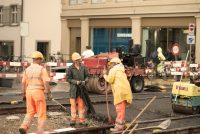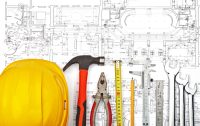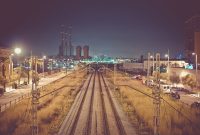Now the cold weather has begun to pass, and Spring is now upon us, it is the time that we all start to kick back and dream of our summer holidays. Whether you are chasing the sun, culture or just the beauty of a new place, it is time to start making a choice on where you want to go. If you love architecture, sun and beautiful cities then I have some great picks just for you! Some of the worlds best architectural cities are a must see; here are my top five picks.
Dubai
Dubai is famous for many reasons as a holiday destination and this is mainly due to the gold sandy beaches and glorious sunshine. However, if you wish to visit somewhere that boasts tremendous architecture then, Dubai is the place for you. Wherever you are in Dubai all you must do is stand still and look up and you will be surrounded by some of the best architecture you will ever see. Famous for being the tallest building in the world, The Burj Khlaifa stands at 2,723 feet tall. This piece of modern architecture is incredible to see up close and it will not disappoint. It’s three times as tall as the Eiffel Tower and nearly twice as tall as the Empire State Building. It has the longest single running elevator, which is 140 floors. The elevators go 10 meters per second and are among the fastest in the world. It will take you approximately only one minute to reach the observation deck on the 124th floor.
New York
New York is a fast-paced city; if you love the hustle and bustle then New York is the place for you. It is known for its incredible sky scrapers and architectural history – you will not be disappointed. Now there are many different architectural buildings in New York that will take your breath away. From the Rockefeller Centre to The Empire State Building and all those in-between. The Empire State was constructed in a race for the world’s tallest building in the late 1920’s. It was completed in record time, from start to finish it was done within 20 months.
Beijing
Beijing is well known; it was home to the Olympic Games in 2008 and this made the city a popular tourist destination. Well known is the Great Wal – architects began building the Great Wall of China during the 7th Century BC to protect the Chinese empire. The length of the Great Wall is 21,196.18 km, and it is more than 2,300 years old. So, the oldest in my top five. It is one of the few landmarks that you can see from space. Something completely different from the Great Wall is the home to China’s Central Television Centre. It is located in the busy commercial area of the city, close to World Trade Centre. The tower was designed by Rem Koolhaas and Ole Scheeren, and was created to look like to inverted “L’s” connecting. This building stands out due to it breaking away from the traditional architecture that is situated in the city. It stands at 234 metres high with 52 floors.
Barcelona
Barcelona is beautiful city, boasting amazing culture. One amazing piece is La Sagrada Familia which was designed by Antoni Gaudis. Antoni Gaudis’ work can be spotted throughout Barcelona; you will simply not be able to miss it. Construction for the Sagrada Familia project began in 1882. When Gaudí died in 1926, only a quarter of the basilica was completed. Gaudí made sure to spend his last few years dedicated to the project. It was obvious that it wouldn’t be finished during his lifetime, with an estimated completion date of 2026. Back when construction began in the late 1800s, there were no computers or digital animation to rely on for the project. In the past, builders had to rely on paper sketches to correctly put together this massive structure.
Paris
Paris is well known for being the city of love. This is evident from the Love Lock Bridge which is now situated at Point de Neuf due to it causing damage to the original bridge. Every single building you come across is absolutely beautiful and it is like no other city. The Notre Dame is well known for many reasons; it is known famously for its French gothic architecture. It is one of the largest religious buildings in the world. The famous twin towers go as high as 69 meters (226 feet) and it have 387 steps. The Eiffel Tower was completed on March 31, 1889, and the tower was the world’s tallest man-made structure for 41 years until the completion of the Chrysler Building in New York in 1930. It is 324 metres tall and weighs 10,100 tonnes. Paris has many other amazing architecture fascinations that you must see, here a few; The Louvre, The Arch De Triomphe and The Sacre Couer.
What are your favourite architectural cities? Are there any I haven’t mentioned that you love? Get in touch with us by tweeting us @HighfieldREC and let us know!








